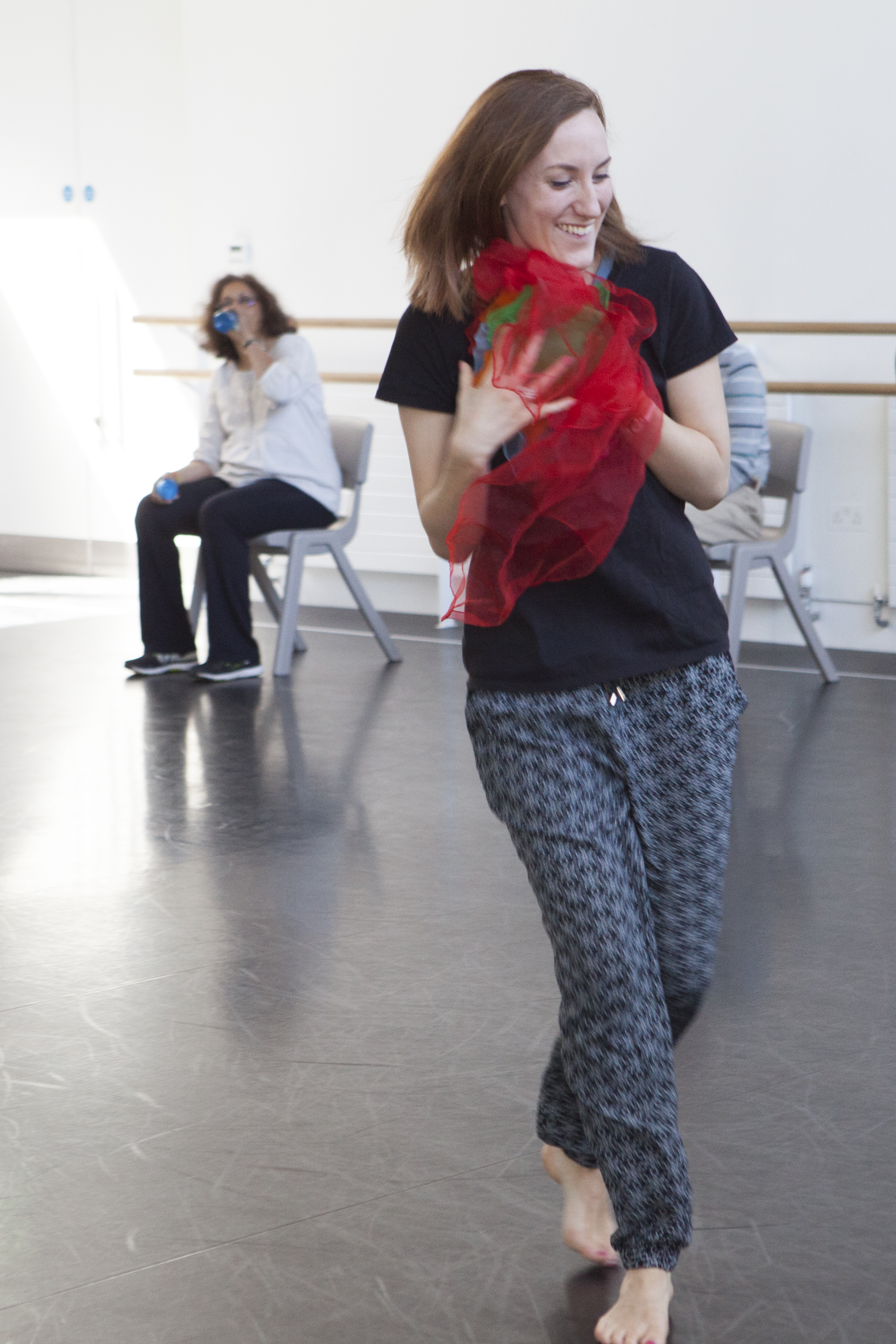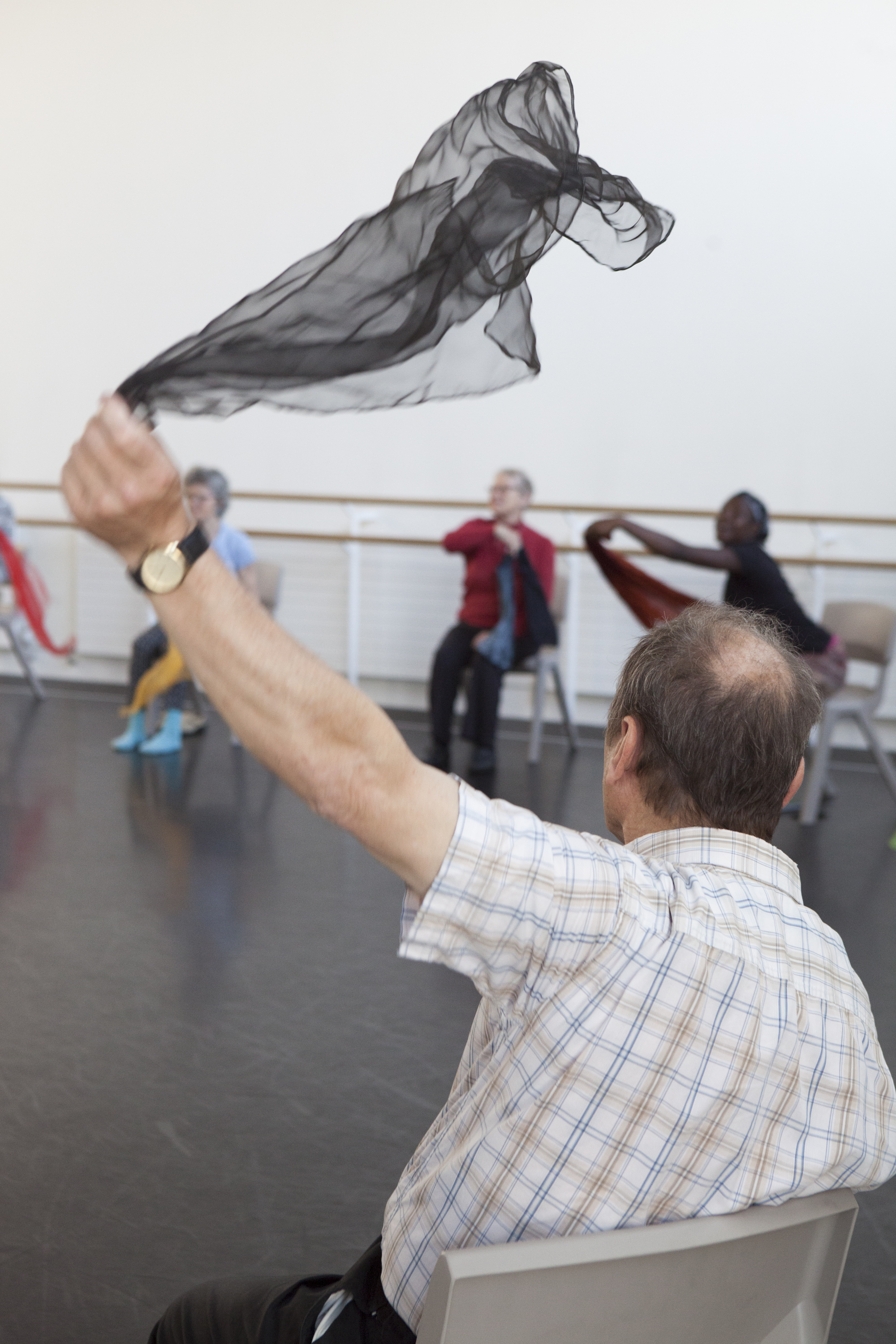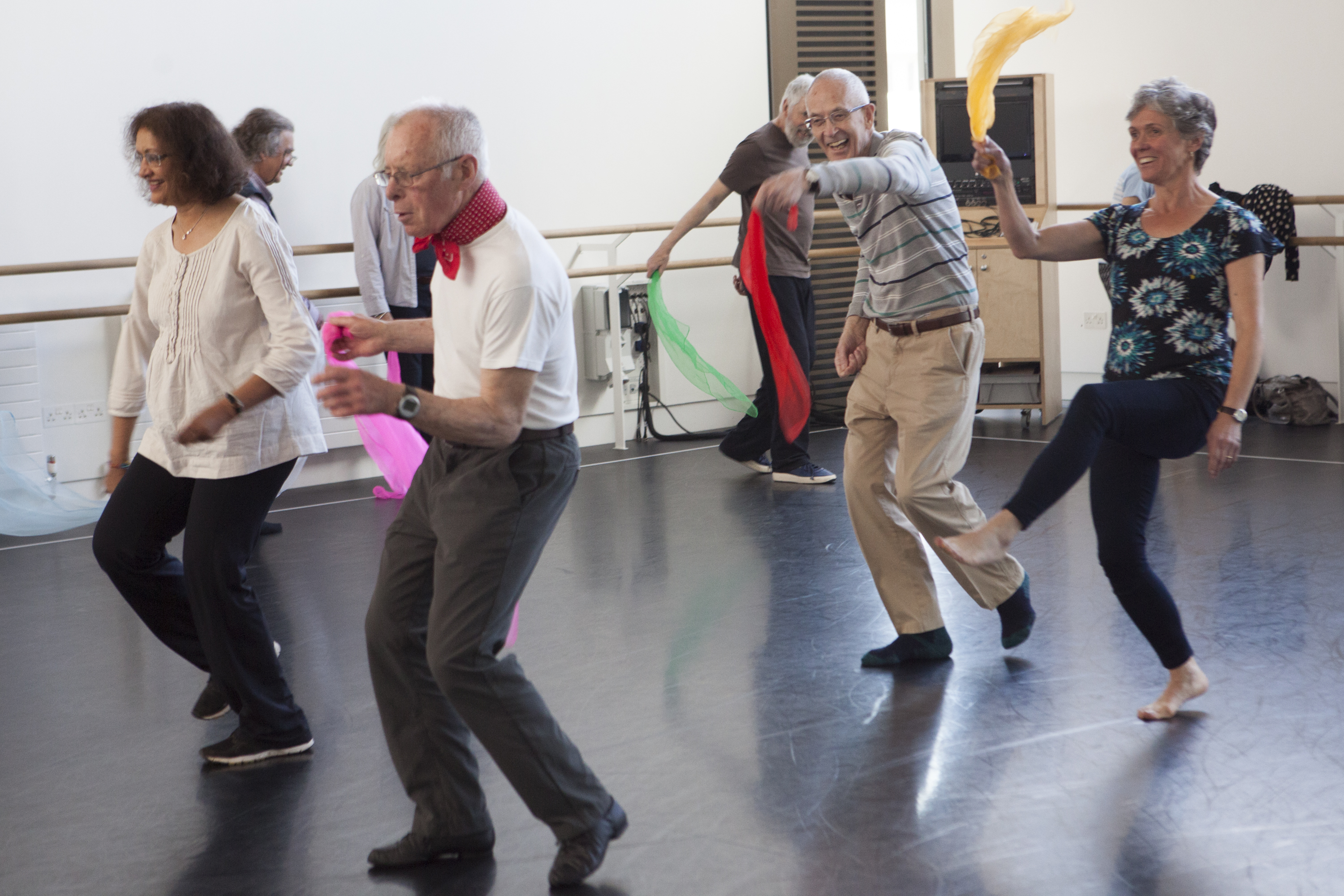“You come away feeling that you’ve been well and truly supported and loved. I think [the classes] are fantastic, really – I would recommend [it] to absolutely everybody.”
Walk through the corridors of Rambert, Britain’s oldest dance company, and you might expect to encounter nymph-like ballerinas perfecting their pliés and pirouettes. It may come as a surprise to learn that these studios are not reserved for the company’s artistes. Frequently, they are occupied by dancers of a different kind. For two and a half years, Rambert has been running classes for people with Parkinson’s.
Parkinson’s is a neurological disorder that generally affects adults over the age of 50. It affects a person’s movement, causing tremor and stiffness, but can also lead to depression, speech difficulties and poor memory.
In the United States, dance has been used as therapy for Parkinson’s for over a decade. Rambert is one of a handful of professional dance companies teaching these classes in the United Kingdom – and the impact that sessions can have is profound.
“To see that transformation is brilliant”
An advocate of dance for all, Londoner Katie Mason returned to the capital following an undergraduate dance degree at the University of Chichester. Passionate about community dance practice, Katie is now the Elders Programme Coordinator at Rambert. This means that she manages the company’s multiple outreach projects for older adults.
Having worked with pupils of all ages, Katie recognises that teaching dance to adults with Parkinson’s presents a unique set of challenges. With symptoms varying from person to person, staff strive to understand how the condition affects each participant.
Katie told the IPF:
Having managed the programme for over two years, Katie recognises that the classes require an emotional commitment from teaching staff.“These are adults…they’ve got their own individual minds and are independent people. You really have to take that on board and listen to their bodies, listen…how to work with the condition.”
“It can be quite emotional, this work. You go in, you teach, but you can’t leave it at the door – the experience stays with you.”
Katie explains that Dance for Parkinson’s training is very specialised; tutors choreograph routines that deliberately target specific symptoms.
Rambert recognises the vital role that music can play in overcoming problems with movement, employing a pianist to accompany each class. The rhythm that the live musician provides “helps [those with Parkinson’s] keep…going”, enabling their movements to be as fluid and expressive as possible.
With classes running in eight-week blocks, staff notices both physical and behavioural changes in students as sessions continue. Katie notes that participants “become more confident, more creative”, and shares how one gentleman found attending classes particularly helpful in improving his gait:
“We had one guy who was really forward…in his walk, and a couple of our artists really worked with him to hold his weight back and to move sideways rather than forwards. He emailed us later on, [saying]…’I’ve been using your technique and…I’ve really developed my walk – it’s got much better’. So I think we are doing things that participants are taking on board and doing outside class, which is great.”
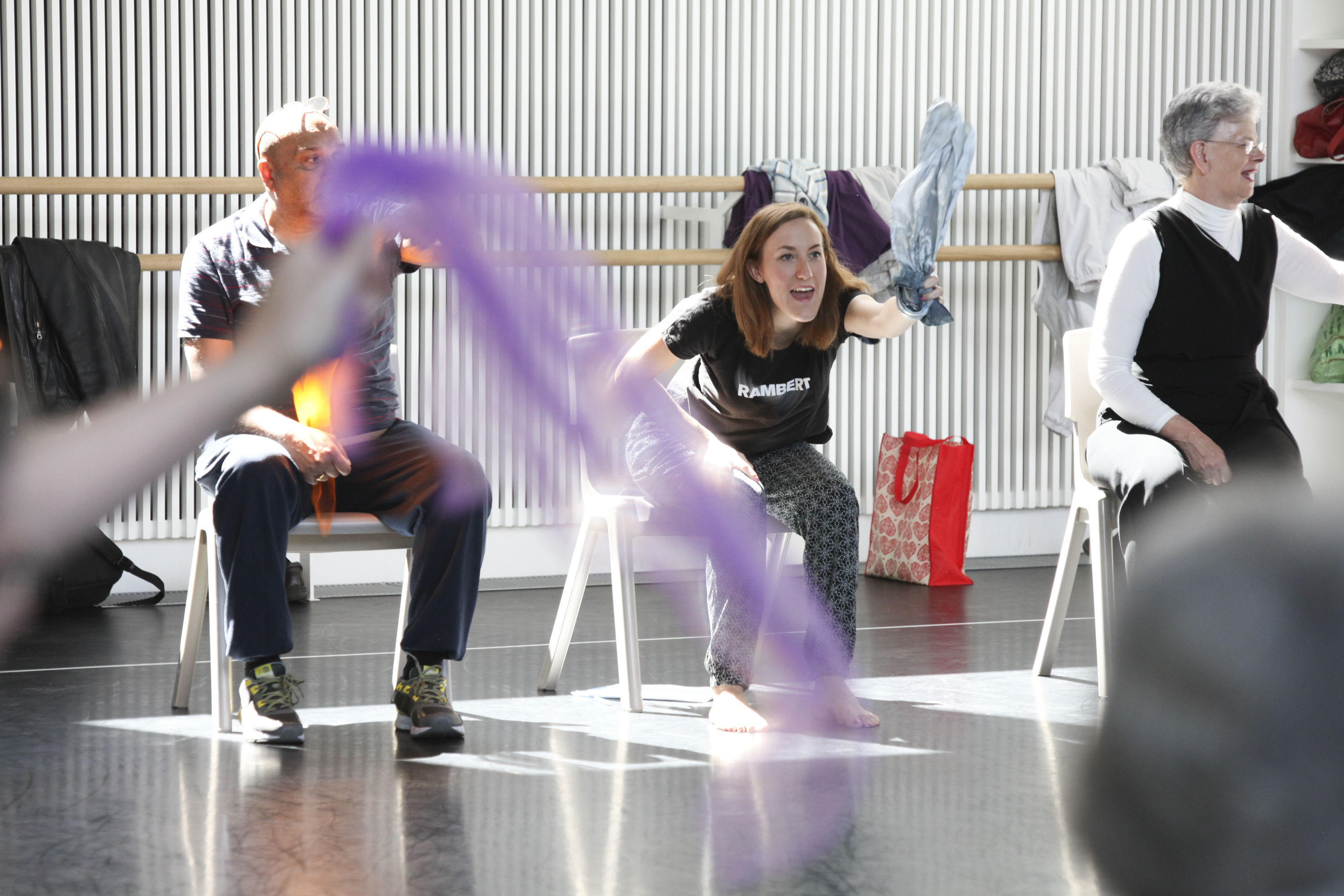
Like other teaching staff at Rambert, Katie is “honoured” that participants choose to attend each week. [Image Credit: Rambert]
However, teaching staff at Rambert do not underestimate commitment demonstrated by participants, many of whom have attended sessions for several years.
“But really, the best thing is that they turn up every week. They made the journey into central London to come to our class when they are going through quite a rough time, so just to see them come into class is an achievement for us and an achievement for them…we feel really honoured.”
John & Jo: “It’s been immensely helpful”
A retired management consultant, John decided to attend classes at Rambert following a recommendation from his physiotherapist. Having participated in sessions for two years, he recently returned to Rambert after breaking his leg, an injury almost certainly caused by his Parkinson’s. John’s wife Jo accompanies him to each class, enabling John to participate as fully as possible while he recovers.
John initially doubted whether dance could help people with Parkinson’s:
For John, participating in sessions has been “immensely helpful” in several different ways. With much of his treatment taking place in hospital, he enjoys spending time in such a different setting:“You can go to class with this awful cynicism…but [each session] does help a lot…the movements that you’re doing are all an exercise regime, but packaged as dance.”
“A hospital environment…can be depressing – there’re people with advanced stages of Parkinson’s or MS [multiple sclerosis]. I think [the class] takes you away from that, in a sense.”
John comments that the dance programme provided by Rambert has improved his mobility. Frustrated by his increasing inability “to spontaneously get up and do something”, and restricted by his difficulty in climbing stairs, John explains that the class has made him more confident when moving around on a day-to-day basis.
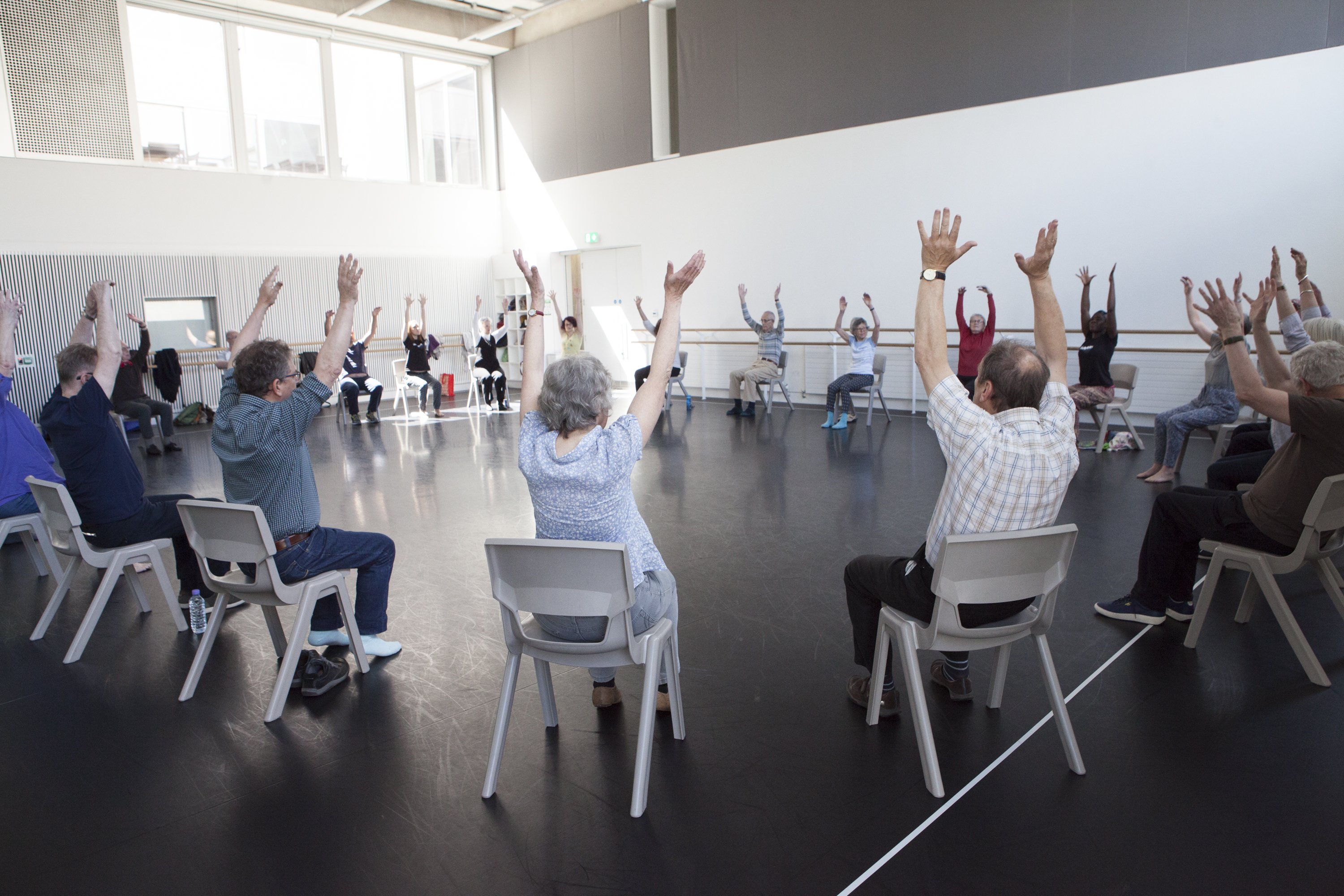
By seating the group in a circle, Rambert reinforces a sense of togetherness. [Image Credit: Rambert]
Marion & Andy: “Go in with an open heart”
With both Marion and Andy having received diagnoses of Parkinson’s, the two friends have been regulars at Rambert’s classes for several years. Although Andy, a semi-retired lecturer at the University of Greenwich, was initially very enthusiastic about attending, Marion felt more hesitant:
“I wasn’t sure I wanted to come, really. I didn’t like the idea of being…with a load of people with Parkinson’s…[then] I got hooked.”
Andy acknowledges that the positive effects of the class are “not immediately apparent”; along with Marion, he believes the benefits of dance for those with Parkinson’s to be subtle, yet undeniable. While treatment for Parkinson’s can result in impaired coordination and uncontrollable jerks, dance can help to encourage more fluid movements, as Andy explains:
“[With Parkinson’s], your movements are not as controlled as they should be. When you start…moving with dance in mind, the only important thing is the flow.”
For Marion, one of the best things about coming to sessions each week is the sense of camaraderie. She is grateful for the opportunity to connect with others who understand what she is going through.
Andy recognises that not everyone diagnosed with Parkinson’s may benefit from what he calls the “releasing effect” of these sessions. For participants to benefit most from dance, he believes that they have to “go in with an open heart”:“It is about losing your inhibitions. You have to suspend your disbelief [and] believe that you can dance.”
To find out more about Rambert’s outreach work with older adults, visit their website, follow them on Twitter and like them on Facebook.


